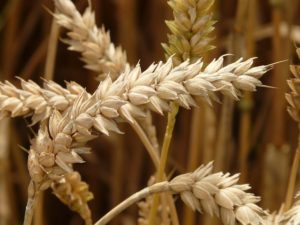 What is celiac disease?
What is celiac disease?
Celiac disease is a severe autoimmune disorder where ingesting gluten damages the small intestines. One in every one hundred people worldwide suffers from celiac disease. When a person who suffers from celiac disease eat gluten, their bodies start an immune response which attacks the small intestines. The small intestines have villi which are little finger-like projections that help the body to absorb nutrients. When celiacs eat gluten, their immune systems damages these villi, hampering the person’s ability to absorb nutrients.
Leaving celiac disease untreated can lead to serious health problems. Other autoimmune disorders such as Type I diabetes can develop and a host of other diseases such as:
- Iron deficiency
- Early onset osteoporosis
- Infertility
- Lactose intolerance
- Vitamin/mineral deficiencies
- Nervous system disorders
- Pancreatic insufficiency
- Intestinal lymphomas or other gastrointestinal cancers
- Gall bladder malfunction
- Neurological problems such as seizures
Treatment for celiac disease
The only treatment for celiac disease is to abstain from eating gluten for life. A gluten-free diet can be very difficult as there are a lot of products with hidden gluten, especially in medicines and supplements. Even trace amounts of gluten such as cutting food using a knife that previously was used to cut bread can be a problem.
The big three no-no’s
The top three things to check for is wheat, barley, and rye. Wheat is often found in bread, baked goods, soups, pasta, cereals, sauces and salad dressings. Wheat is also found in wheat berries, durum, emmer, semolina, spelt, farina, farro, graham, KAMUT®, khorasan wheat, and einkorn.
Barley is found in malt (including malted barley flour, malted milk and milkshakes, malt extract, malt syrup, malt flavoring, and malt vinegar. It is also found in food coloring, soups, and beer.
Rye is found in rye bread, rye beer and rye cereals.
It is critical to check the labels of processed food products to see if they contain any of these three food items. Even trace amounts of gluten can cause wreckage.
To oats or not to oats
Oats can be a good alternative to mix things up in a gluten-free diet. However, celiac patients may only eat oats that are specifically announced as gluten-free. Sometimes oats are grown next to wheat, barley or rye, and there can be some cross-contamination. If you want to eat oats and stay gluten-free, it is best to discuss it with your physician first.
Gluten-free foods
Luckily there is a host of food products that are naturally gluten free. These include fruits, vegetables, meat and poultry, fish and seafood, dairy, and beans, legumes, and nuts. There are some lesser known grains and starches that are gluten-free. Many supermarkets have caught on to the gluten-free dietary needs and stock these grains. They include rice, cassava, corn, soy, potato, tapioca, sorghum, quinoa, millet, buckwheat groats, arrowroot, amaranth, teff, flax, chia, yucca, gluten-free oats, and nut flours.*
How to read a food product label
The only way to exclude gluten from your diet completely is to read the labels of food products correctly. The number one rule is that wheat-free does not mean gluten-free. The next thing that you can check is the allergen list. However, barley and rye are not considered allergens, so you have to check each ingredient individually for signs of barley, rye, wheat, malt, and brewer’s yeast. If the food product does not have an ingredient list, it is best to move on to the next product. Better safe than sorry!
Gluten-free dining
Dining out can be a difficult experience if you suffer from celiac disease. Go in with a firm grasp on the types of food that you can and cannot eat. Try to download the restaurant menu to see if they have gluten-free options available. If they don’t, move on to another restaurant. Once you’re seated in the restaurant, inform the staff that you cannot eat gluten. Ask questions about the preparation of the food. If the waitrons do not know, let him ask the chef. Here is a list of gluten-free questions that you can ask a waiter regarding food items served in the restaurant.
Gluten-free abroad
Traveling can be a nightmare for celiac patients. Firstly, you might not know the local language and the locals might not know English. Some countries are still struggling to understand vegetarianism, let alone gluten-free diets. The first thing that you have to do before traveling is to find out what gluten-free translates to in the local language. For instance, in Spanish, the word for gluten-free is sin gluten, and in Italy, it is senza gluten. Many countries have gluten-free associations that help travelers to navigate their country gluten-free.
Celiac disease is a dangerous illness with serious repercussions if you don’t follow a strict gluten-free diet. It may seem intimidating at first, but once you are used to it, you’ll find that your gluten-free diet can be quite satisfying.
*What can I eat. (n.d.). Retrieved from https://celiac.org/live-gluten-free/glutenfreediet/food-options/

Share This